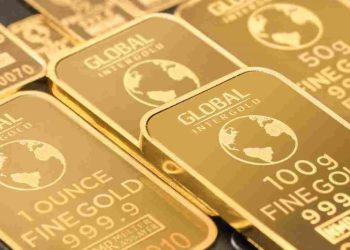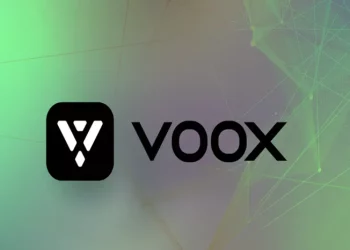CME futures play a crucial role in the global financial markets, providing a platform for traders to hedge risk, speculate on future price movements, and ensure liquidity. This article delves into the intricacies of CME futures, their trading mechanisms, the role of the Chicago Mercantile Exchange (CME), the various types of contracts available, and the reasons traders participate in these markets.
Definition of CME Futures
CME futures are financial contracts traded on the Chicago Mercantile Exchange (CME), which obligate the buyer to purchase an asset, or the seller to sell an asset, at a predetermined future date and price. These contracts cover a wide range of asset classes, including commodities, currencies, stock indices, and interest rates. The primary characteristic of futures contracts is their standardized nature, which ensures that they can be traded easily on an exchange.
CME futures are integral to financial markets due to their role in price discovery and risk management. The futures market allows participants to take a position on the direction of the underlying asset’s price, either to hedge against potential price fluctuations or to speculate for potential profit.
Exchanges and Contracts
The Role of CME as an Exchange
The Chicago Mercantile Exchange, part of the CME Group, is one of the world’s leading and most diverse derivatives marketplaces. It provides a transparent and regulated environment for trading futures and options. The CME Group includes several exchanges, such as the Chicago Board of Trade (CBOT), New York Mercantile Exchange (NYMEX), and Commodity Exchange Inc. (COMEX), each specializing in different types of futures contracts.
CME operates electronic trading platforms, primarily CME Globex, which allows participants to trade virtually around the clock. The exchange also provides clearing services, ensuring that the obligations of the contracts are met, thereby reducing the risk of counterparty default.
Different Types of Futures Contracts
CME offers a vast array of futures contracts, each catering to different market participants and needs. Some of the prominent types of futures contracts include:
Commodities Futures: These contracts involve physical goods such as crude oil, natural gas, gold, silver, corn, and wheat. For example, NYMEX is known for its energy futures like crude oil, while COMEX is famous for precious metals futures like gold and silver.
Financial Futures: These contracts are based on financial instruments like currencies, interest rates, and stock indices. Examples include Eurodollar futures, U.S. Treasury bond futures, and foreign exchange futures.
Equity Index Futures: These contracts are based on stock market indices such as the S&P 500, NASDAQ-100, and Dow Jones Industrial Average. These are widely used for hedging and speculative purposes in the equity markets.
Agricultural Futures: These include contracts on agricultural products like soybeans, cattle, and coffee, providing essential risk management tools for farmers and agribusinesses.
Interest Rate Futures: These contracts, such as Eurodollar futures and Treasury futures, are used to hedge or speculate on changes in interest rates, making them crucial for financial institutions and corporations managing interest rate risk.
Features of Futures Contracts
Standardization
One of the hallmark features of CME futures is their standardization. Each contract specifies the quantity of the underlying asset, the quality (if applicable), the delivery time, and the delivery location. This standardization facilitates liquidity and allows for the contracts to be interchangeable among market participants. For instance, a crude oil futures contract on NYMEX specifies 1,000 barrels of a particular grade of oil to be delivered at a designated time and place.
Expiration Date
Every futures contract has a specific expiration date, after which the contract is settled. The settlement can be either physical, where the actual commodity is delivered, or cash-settled, where the difference between the contract price and the market price is exchanged in cash. For example, many financial futures, such as those on stock indices, are typically cash-settled.
Margin Requirements
Trading futures involves the use of margin, which is a deposit made by traders to ensure that they can meet their obligations. There are two types of margins: initial margin and maintenance margin. The initial margin is the upfront deposit required to enter a futures position, while the maintenance margin is the minimum amount that must be maintained in the account to keep the position open. If the account balance falls below the maintenance margin, the trader will receive a margin call and must deposit additional funds to restore the balance.
Leverage
Futures contracts are inherently leveraged instruments, meaning that traders can control a large position with a relatively small amount of capital. This leverage can amplify both gains and losses, making futures trading potentially very profitable but also highly risky. For example, with an initial margin of $10,000, a trader might control a contract worth $100,000, providing a leverage ratio of 10:1.
Mark-to-Market
Futures positions are marked to market daily, meaning that the profits and losses are calculated and settled at the end of each trading day based on the closing market prices. This daily settlement ensures that losses are accounted for and reduces the risk of default by either party.
See also: What Does Cme Stand For Futures?
Traders’ Purpose
Hedging
One of the primary reasons traders engage in CME futures is to hedge against price risk. Hedgers are typically producers or consumers of the underlying asset who seek to protect themselves against adverse price movements. For instance, a farmer might use futures contracts to lock in a price for their crops, thereby securing revenue regardless of future market fluctuations. Similarly, an airline might use futures to hedge against rising fuel costs.
Speculation
Speculators, on the other hand, trade futures contracts to profit from anticipated price movements. They do not have an interest in the underlying asset itself but are instead looking to capitalize on market volatility. For example, a trader might buy crude oil futures if they believe oil prices will rise in the future. If the price does increase, they can sell the contract at a higher price and realize a profit.
Arbitrage
Arbitrageurs exploit price discrepancies between different markets or related contracts to earn risk-free profits. For example, if the price of a commodity in the futures market is higher than in the spot market, an arbitrageur might buy the commodity in the spot market and sell it in the futures market, locking in a risk-free profit. This activity helps to ensure that prices remain aligned across different markets.
Liquidity and Price Discovery
Traders also participate in the futures market to provide liquidity and aid in price discovery. Liquidity refers to the ease with which an asset can be bought or sold without affecting its price. By actively trading futures contracts, speculators and arbitrageurs provide the necessary liquidity, allowing other market participants to enter and exit positions easily. Price discovery is the process of determining the market price of an asset based on supply and demand dynamics. The futures market plays a crucial role in this process, as it reflects the collective expectations of all market participants about future price movements.
Conclusion
CME futures are a fundamental component of the global financial system, offering a wide range of contracts that facilitate hedging, speculation, and arbitrage. The standardized nature of these contracts, combined with the leverage and margin requirements, makes them accessible and attractive to various market participants. Whether for managing risk, seeking profit, or ensuring market efficiency, CME futures serve multiple purposes and are essential tools for traders and investors alike.
By providing a regulated and transparent platform for trading, the CME Group enables efficient price discovery and liquidity in the financial markets. Understanding the features and purposes of futures contracts is crucial for anyone looking to participate in this dynamic and complex market. As financial markets continue to evolve, CME futures will undoubtedly remain a cornerstone of modern trading strategies.
Related topics:

























